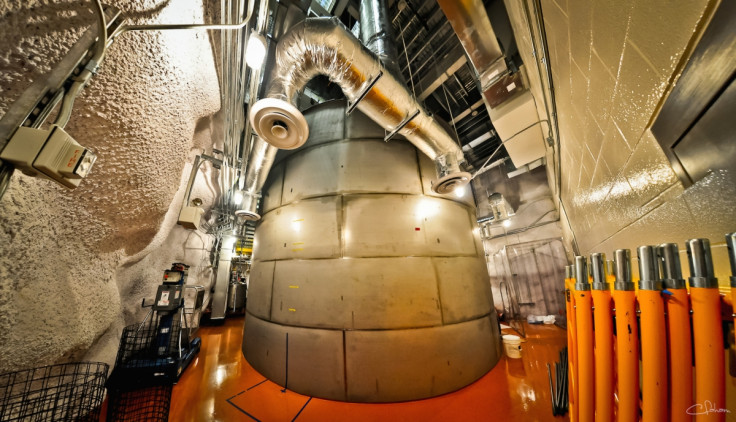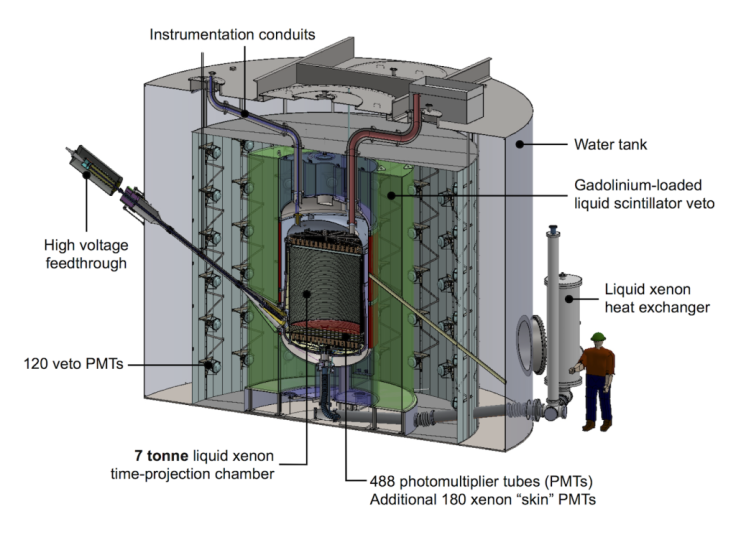The hunt for dark matter: How scientists are edging closer to finding mystery particles

The search for dark matter is ramping up, with technological advances bringing scientists ever closer to discovering the mystery particles that, together with dark energy, makes up about 95% of the universe. Professor Alex Murphy, of the University of Edinburgh's School of Physics and Astronomy, told IBTimes UK that experiments taking place deep underground now could mean we "see something" in just three years.
Murphy held a talk about the hunt for dark matter at the meeting of the American Association for the Advancement of Science (AAAS). In it, he talked about our current understand – or lack thereof – of dark matter and what scientists across the globe are doing to detect and define it. This includes examining the effects dark matter has on galaxies and light in space, as well experiments taking place a mile underground in South Dakota, using the Large Underground Xenon, or LUX, detector.
"There are several distinct methods to try to detect dark matter – our direct searches, indirect searches where the search is for the products of dark matter particle annihilations (eg in to photons or electrons/positrons, as searched for by the AMS project, or with very high energy gamma ray searches such as FERMI or VERITAS)," he said.
"And then there are the accelerator searches, such as at the LHC [Large Hadron Collider], where the idea is that they can make dark matter. Each of these methods has relative strengths and weaknesses.
"But each of the methods, if successful, tell you something a bit different. Having positive detections from two or three methods would tell you much more about the nature of dark matter. So they are genuinely complementary. Which will be first? Well, I'm biased and think direct searches have a really good chance. But who knows."

Murphy is involved in the LUX experiments and his work focuses on the direct detection of dark matter. LUX located deep underground in order to minimise interference with other particles. Its aim is to identify weakly interactive massive particles, or WIMPs, which are thought to be the main component of dark matter.
"For us, the next phase is a bigger and better detector, LUX-ZEPLIN (LZ). This will be about 100x more sensitive," he said. The upgrade is similar to how the LIGO detector (used to find gravitational waves) was made more sensitive.
At present, LUX scientists have tested a large section of parameters that theory predicts dark matter might have but they have come up empty handed. "The LZ project will greatly extend our reach, testing much more of the 'allowed' model space," he said. "So that would mean there's a really good chance we could see something by around 2019. But LZ doesn't cover all the theory prediction space, so if nature is 'unkind', maybe LZ will not be enough to see it."

The other issue is the parameters being tested are all based on the best theory they have about dark matter – if the theory is wrong or needs tweaking, this will make the search all the more difficult. He said: "But this is why need to discover dark matter – to tell us which theory is right. Until we get a detection, we'll never know."
The recent discovery of gravitational waves had many suggest this will aid in the search for dark matter. Murphy said the biggest impact the detection of gravitational waves has for dark matter science is that it is consistent with the predictions of general relativity.
He said: "All the evidence to date for dark matter comes from interpretation of astrophysical observations, and that interpretation relies on our understanding of gravity. If our theory of gravity were wrong, then maybe the conclusion that there must be dark matter could be wrong.
"But the gravitational wave detection suggests we understand gravity pretty well. The caveat here is that the gravitational wave observation is testing general relativity in a very different regime from the dark matter one. But at least it works there. And in fact, it general relativity were to break down, the merger of black holes is perhaps the first place we might expect hit to do so. So I think after the gravitation wave detection we have more confidence that the dark matter hypothesis is correct."

But what happens if we do not detect dark matter? We can still use theories about the universe but these cannot be tested until it is found. Murphy said: "In some ways, we have a pretty good understanding of it already. Our best theories of cosmology have dark matter front and foremost as a pillar of the model. We know how much of it there must be, we have pretty good ideas of how it is distributed in the Universe, and we know pretty well how its presence has influenced the evolution of the universe from the earliest times to the present day.
"What we don't know is just what the dark matter is at the individual particle level. And at a slightly higher level, we don't know for sure that all the above 'understanding' is true. It could conceivable be wrong. We need to prove it to move on. Are there ways of understanding it? Yes. But until we detect it, that will just be theory. We want to know the theory is correct."
© Copyright IBTimes 2025. All rights reserved.






















